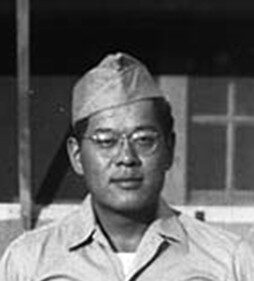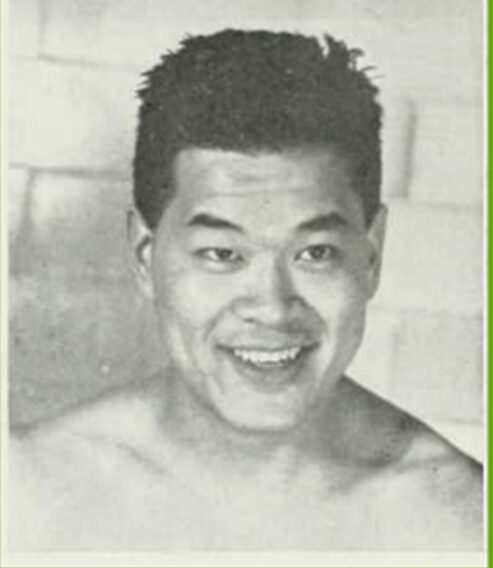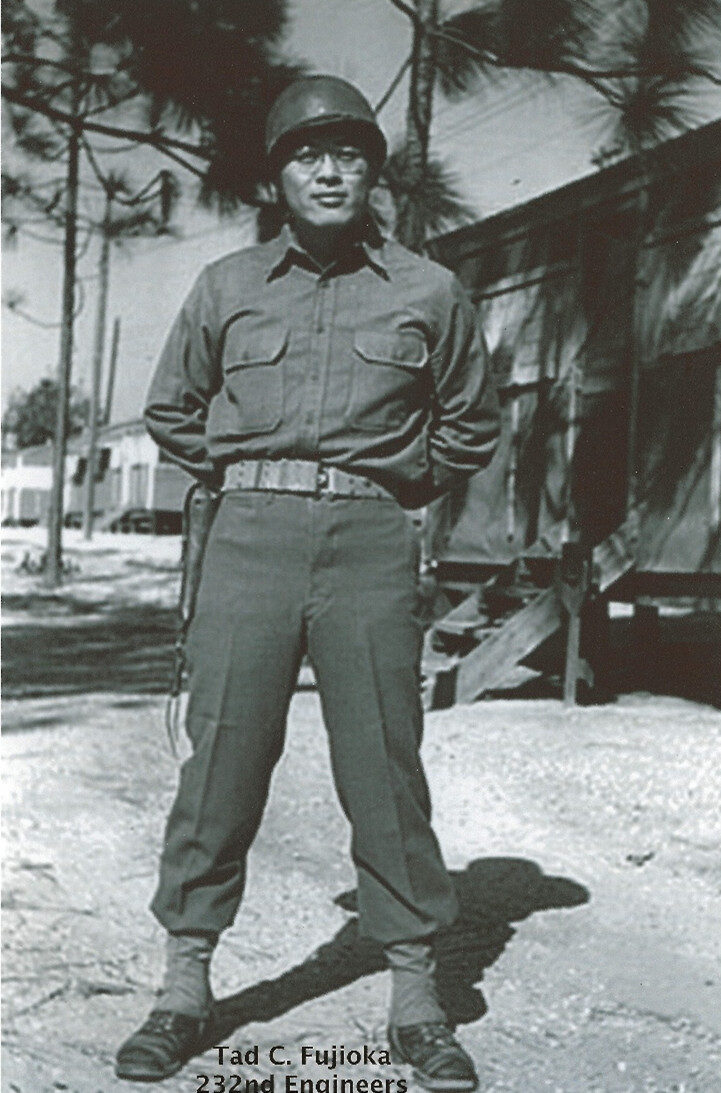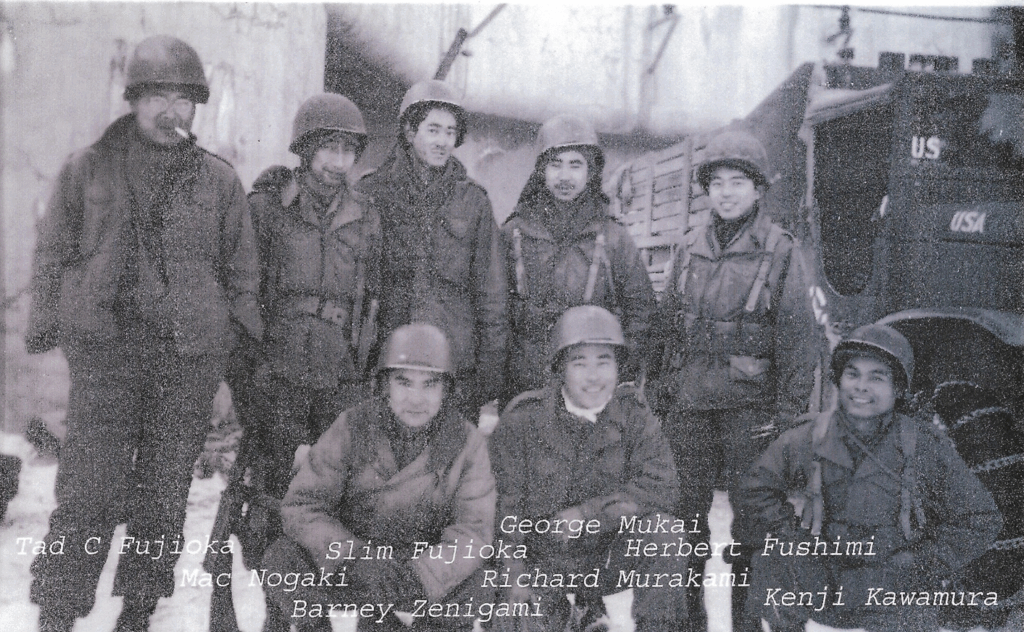Soldier Story: Tadashi Cecil Fujioka
Soldier Story

Tadashi Cecil Fujioka
Technician 4th Grade
442nd Regimental Combat Team
232nd Combat Engineer Company
Tadashi Fujioka was born on November 1, 1919, in Seattle, Washington, to Hakuta and Fumiyo (Ono) Fujioka. There were four children in the family: sons Kyosuke, Hiroshi, and Tadashi; and daughter Mariko.
Parents Hakuta and Fumiyo arrived in the US in 1907 and 1915, respectively. Hakuta was born in the town of Takahashi, Okayama Prefecture, Japan. He first arrived in Seattle on May 7, 1907, on the Aki Maru. He returned to Japan in July 1914 on the Yokohama Maru and married Fumiyo Ono on December 29, 1914. Fumiyo was also born in the town of Takahashi. They then sailed to Seattle, arriving on April 23, 1915, on the Aki Maru.
In 1920, the family was living at 120 21st Avenue South in Seattle. Father Hakuta was a department manager at a men’s furnishings store.
In 1930, they lived at 2019 Charles Street and Hakuta was the manager of a cannery. Tad, as he was called, attended Franklin High School, where he played varsity football on the first team. He graduated in 1939.
In 1940 the family lived at 2303 1st Avenue. Hakuta was a partner in an import-export business, and the two eldest sons were employed – Kyosuke was the proprietor of a retail grocery store and Hiroshi was a track layer on the steam railway.

After high school, Tad enrolled at the University of Washington (UW) in Seattle. While there, he earned a freshman letter in football and a varsity letter on the Swim Team.
Right: Tad Fujioka, 1941, UW Swim Team
Tad Fujioka signed his draft registration card on July 1, 1941, Local Board No. 8 in Seattle. He lived with his family at 2303 1st Avenue and his point of contact was his brother Kyosuke. He was 5’11” tall and weighed 188 pounds. He was a student at the University of Washington.
Tad was employed during the summers at the New England Fish Company in Ketchikan, Alaska. While there, he met Cherry Tsuruko Tatsuda (born May 27, 1921), daughter of James K. and Sen Tatsuda of Ketchikan.
In the spring of 1942, the Fujioka family was evacuated to Puyallup WCCA Assembly Center at the Puyallup Fairgrounds. They were sent to Minidoka WRA Camp in Jerome, Idaho, and incarcerated there in August 1942.
While at Minidoka, Tad reconnected with Cherry Tatsuda. She and her family had been evacuated from Ketchikan and also incarcerated at Minidoka. The couple married on February 5, 1943. On May 21, Tad was released to Camp Douglas, Utah. On December 21, 1943, their first child was born at Minidoka. Cherry Fujioka and infant son were released to Chicago, Illinois, on April 13, 1944, to join family there. Sister Mariko was released on January 25, 1944, to Milwaukee, Wisconsin, for independent employment. Brother Kiyosuke and his wife May Mayko (Kumasaka) Fujioka were released to Chicago by invitation on June 23, 1944. Brother Hiroshi was released for independent employment in Parma, Idaho, on August 30, 1944. Tad’s parents, Hakuta and Fumiyo, were released to Chicago on March 12, 1945.
Fujioka enlisted in the U.S. Army on May 22, 1943, in Salt Lake City, Utah. He had completed two years of college and his address was given as Jerome, Idaho. He was sent to the 442nd RCT at Camp Shelby, Mississippi, where he was assigned to the 232nd Combat Engineer Company.
The 232nd Combat Engineer Company, an original unit of the Combat Team, trained next to the infantry and field artillery and learned the same things – the fundamentals of soldiering. But they were also learning to ply their specific trades. The engineers played dangerous games with high explosives – building bridges and blowing them up, building and repairing roads, removing enemy roadblocks, and laying and destroying minefields. They learned how to operate their machines: metal detectors, chainsaws, and bulldozers. There were 204 enlisted men plus seven officers in the 232nd over the course of their service.
Basic training ended on August 23 and was followed by five days of intensive testing from Third Army teams. The RCT rated Excellent in physical fitness and Very Satisfactory in all other departments. Next followed a respite of short furloughs to enable men to visit cities such as New York, Chicago, or New Orleans, or to go west to visit their families in internment c
Platoon and company training began about October 20 and lasted about one month. This was followed by the final phase of training – combined training. Part of this time was spent with the 232nd Engineers demonstrating their abilities in support of the infantry. Several times the regimental commander called on the engineers to execute demolitions and then dig in as infantry to defend them so as to delay an enemy advance.

Left: Fujioka at Camp Shelby, 1943
The entire Combat Team next participated in “D” Series maneuvers beginning on January 28, 1944, in the DeSoto National Forest, Mississippi. The 442nd and the 232nd were attached to the 69th Infantry Division for the maneuvers.
Finally, on April 22, 1944, the Combat Team departed Camp Shelby for Camp Patrick Henry, Virginia. On May 2, they sailed in a convoy of over 100 ships from Hampton Roads for the Theater of War, arriving at Naples, Italy, on May 28. The 232nd Combat Engineers sailed on the Liberty Ship S.S. Thomas Cresap along with the 442nd’s 206th Army Ground Forces Band. They were assigned to bunks in Hold No. 2. During the weeks at sea, the 206th Band entertained with concerts on deck and even in the below-deck quarters in inclement weather.
The 442nd entered combat near Suvereto, north of Rome, on June 26 in the Rome-Arno Campaign. While there, a newspaper article described some of the action that Corporal Fujioka saw around July 7-9:
The regiment’s engineers have been the talk of the entire division of Yankees. They will tell you that one of the neatest mop-up jobs was done by Lieutenant Walter Matsumoto of Honolulu, Cpl. Tadashi Fujioka of Seattle, Wash., and the crew headed by Sgt. John Tsukano also of Seattle, after snipers got one of their sergeants west of Castellina. They dug the jerries out all over the hill, killed four, captured three and chased the rest back over the ridge.
The Combat Team continued pushing the Germans north, constantly gaining ground. They remained in Italy until departing on September 27 for France. The 232nd sailed on the U. S.S. Samuel Chase on September 26 and debarked at Marseilles on September 29.
After arriving in southern France, the Combat Team headed north and fought in the Rhineland-Vosges Campaign beginning on October 13. This was the most bitter fighting they had encountered. The 232nd Combat Engineers were attached to the 111th Engineer Combat Battalion of the 36th Infantry Division. They endured almost continuous rain and snow, and yet between October 23 to November 11 the men accomplished the engineering feat of constructing a supply road out of what was a mountain trail that rose 1,000 feet off the floor of the Laveline-Corcieux Valley of the Vosges Mountains. The road enabled supplies to be taken in and casualties to be carried out. This road led to the 36th Division outflanking the Germans and pursuing a disorganized enemy to the banks of the Meurthe River.
From October 26 to October 30, they participated in the famous rescue of the trapped “Lost” Battalion – the 1st Battalion of the 141st (Texas) Infantry Regiment – by sweeping the roadways for mines and keeping them clear for traffic. The 232nd Engineer Company was awarded a Distinguished Unit Citation for their actions in the Vosges Campaign.
Below: 232nd men in France, 1944: Standing L to R – Tad C. Fujioka, Masayasu (“Mac”) Nogaki, Slim Fujioka, George Takashi Mukai, Herbert H. Fushimi; Kneeling L to R – Barney Seiso Zenigami, Richard T. Murakami, Kenji Kawamura

Due to devastating casualties that put the 442nd below combat strength, they spent the months of December 1944 through March 1945 in the Rhineland-Maritime Alps Campaign. This was a mostly defensive position to guard against enemy incursion along the French-Italian border. After rebuilding their numbers, the 442nd was sent back to Italy to fight in the Po Valley Campaign. On March 23, 1945, the Engineers embarked on the LST 907 for Italy.
The 442nd was engaged in combat from April 4 until the German forces in Italy surrendered on May 2. Once again, the 232nd Combat Engineers were awarded a Distinguished Unit Citation as part of the Combat Team for their part in breaking the enemy’s heretofore impregnable Gothic Line.
For his military service, Technician 4th Grade Tadashi Cecil Fujioka was awarded the: Bronze Star Medal, Good Conduct Medal, European-African-Middle Eastern Campaign Medal with four bronze service stars, World War II Victory Medal, Army of Occupation Medal, and Distinguished Unit Badge. He was posthumously awarded the Congressional Gold Medal on October 5, 2010, along with the other veterans of the 442nd Regimental Combat Team. Conferred by the U.S. Congress, the award states: “The United States remains forever indebted to the bravery, valor, and dedication to country these men faced while fighting a 2-fronted battle of discrimination at home and fascism abroad. Their commitment and sacrifice demonstrates a highly uncommon and commendable sense of patriotism and honor.ˮ
After the war, Tad Fujioka returned to Seattle. In 1948 he made a donation to the Memorial Committee fund of the Seattle Nisei Veterans Committee. By 1949 Tad and Cherry were living in Seattle with their son and daughter and Tad was employed as an aeronautical engineer at Boeing Aircraft Company.
Tadashi’s father, Hakuta Fujioka, became a naturalized US citizen on May 1, 1956, in Chicago, Illinois. At the time, he lived at 5039 North Winthrop Street and was employed as an auditor for a café. He was a widower and his children Hiroshi and Mariko also lived in Chicago.
Tad and Cherry remained in Seattle where they raised a family of two sons and two daughters. The family loved outdoor activities – hiking, camping, matsutake mushroom hunting, clam digging, and road trips. Tad retired from Boeing in 1983 and the couple moved to Juneau, Alaska, where he built a small beachfront home. From there, he enjoyed many seasons at his favorite pastime – salmon fishing. He was also active in Senior Volunteer Services and he and Cherry were active members of St. Brendan’s Episcopal Church in Juneau. Tad belonged to the Juneau Amateur Radio Club where he held the highest class of amateur radio license – Amateur Extra.
Tadashi C. Fujioka died at his home on June 28, 2005, in Tee Harbor, near Juneau. Cherry Fujioka died on July 28, 2025, in nearby Auke Bay. Individual memorial services were held for each of them at St. Brendan’s Episcopal Church. There was a joint memorial service held on September 24 at St. Peter’s Episcopal Church, 1610 King Street, Seattle. Tad was survived by his sister Mariko and the couple were survived by their four children and four grandchildren. Tad and Cherry’s ashes were commingled and spread on the waters near their home in Tee Harbor.
Researched and written by the Sons & Daughters of the 442nd Regimental Combat Team in 2025, with assistance from his son, who is a Lifetime Member.